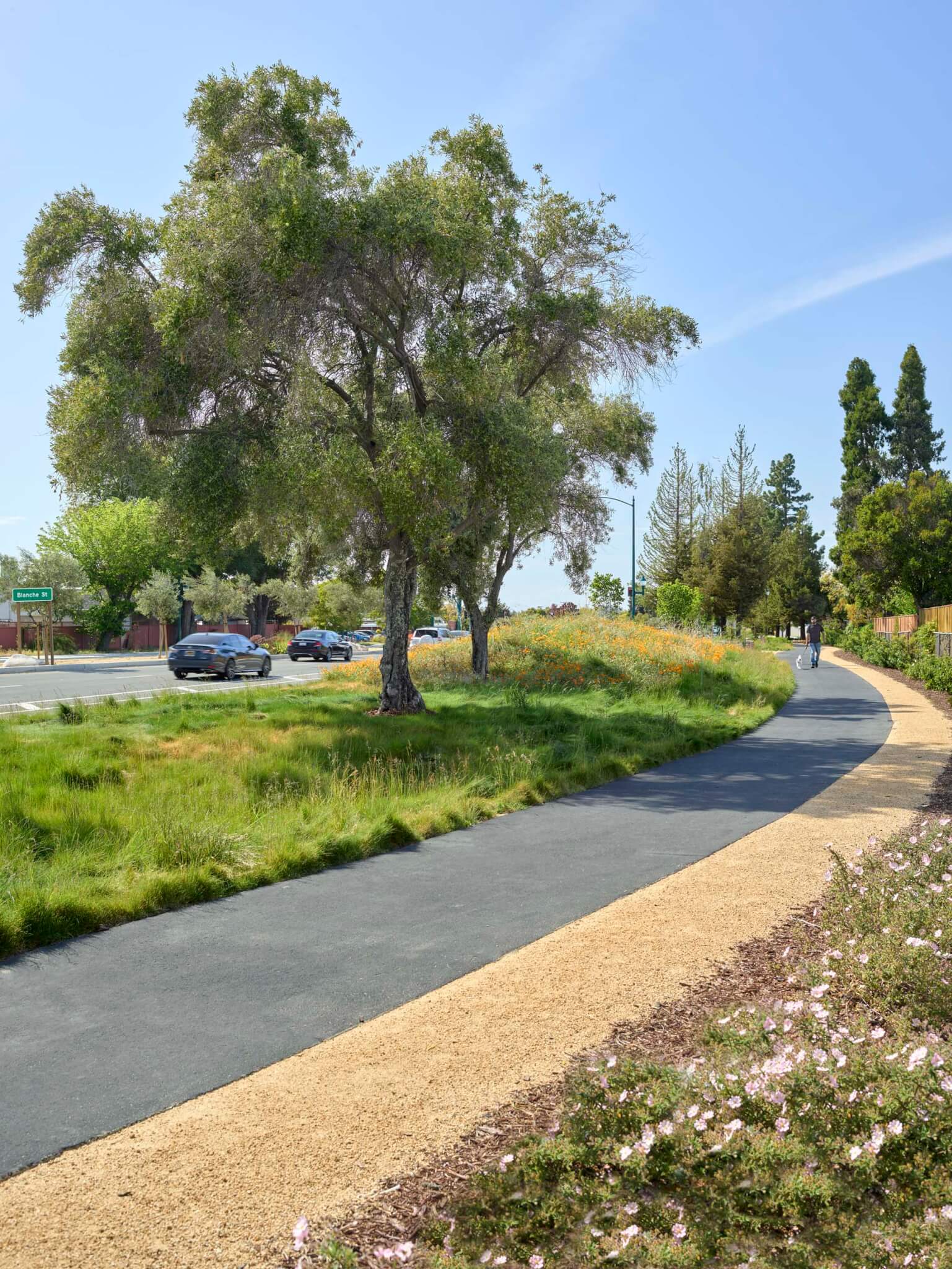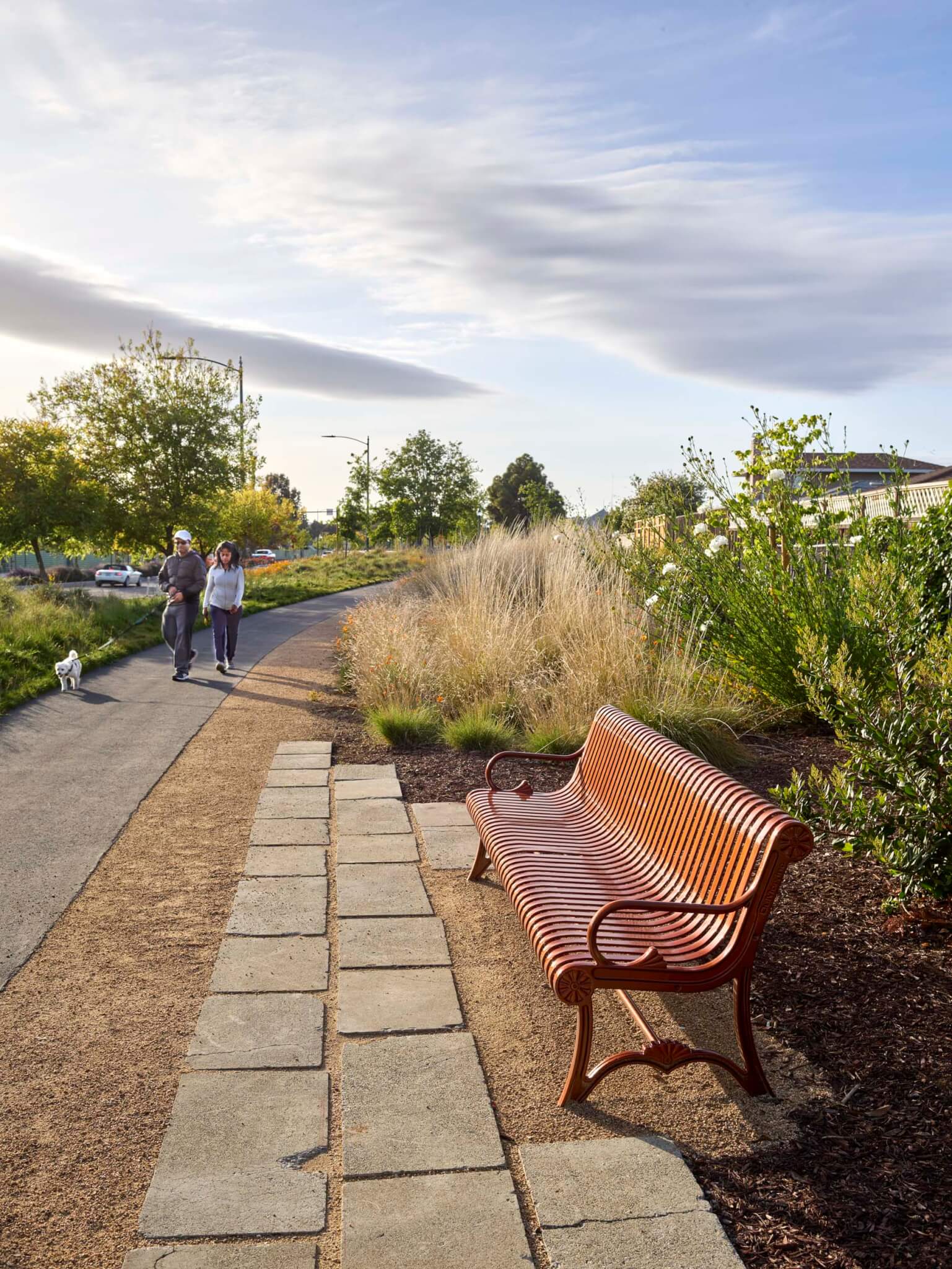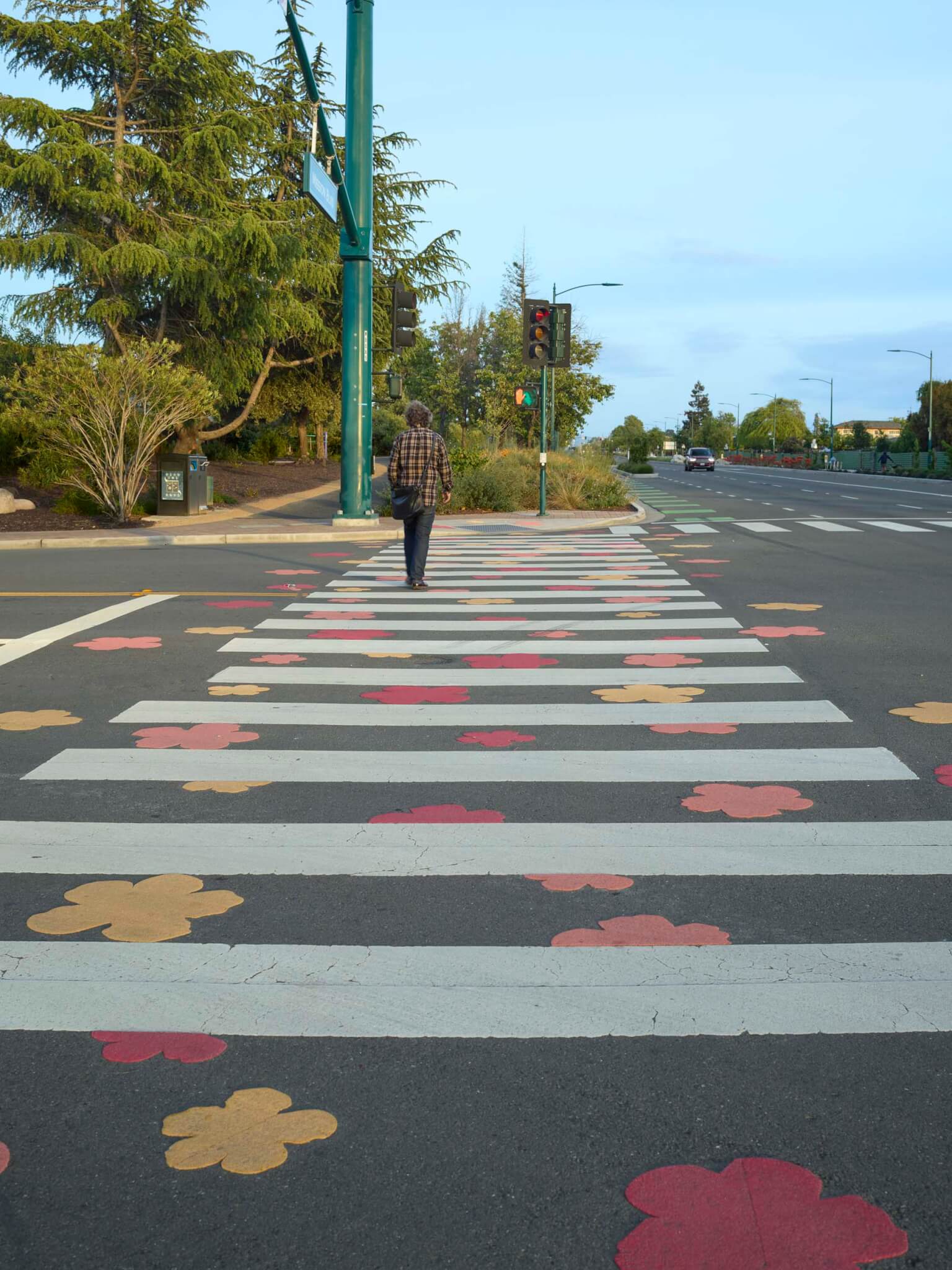Along Mission Boulevard in Hayward, California a linear park adjacent to a busy car thoroughfare was once overgrown and littered with garbage. A community-forward initiative set out to beautify the park, connecting it with its surrounding hilly landscape, while offering a place of recreation the community could actually use and enjoy. San Francisco–based landscape design firm Surfacedesign led the project, which involved widening the path running through the greenway, planting native species, and repurposing materials and objects from around the area.
Three city council meetings held between 2020 and 2021 gave community members an opportunity to voice concerns about the swath of land and propone ideas for its use and revitalization. Among public concerns were issues related to the park’s maintenance, how to control noise, and considerations related to privacy. Evident from these community meetings was the public’s desire for usable recreation space. The sessions took place during the pandemic, when the public was itching to be outside.

“Given the way the park is used now, our ideas about public space have only been affirmed: if people have access to beautiful public space, they will use it eagerly,” Surfacedesign told AN. “The park is full of joggers, strollers, bicyclists and skateboarders, dog walkers, fitness buffs and people who are simply out for fresh air and a walk.”
Prior to the renovation the nearly one-mile-long path running through the greenspace was “inconsistent in its dimensions.” To address this the landscape designers defined an edge for the asphalt pathway and widened the path with 30 feet of decomposed granite. The sustainable material is a softer and cooler alternative to the existing asphalt.

To connect with the surrounding, hilly landscape lush vegetation was planted at nearly every corner, lining the park’s perimeters, and hovering adjacent to the furnishings. Throughout the park are designated areas directly off the main pathway where park goers, dog walkers, and joggers can take a break on a bench or just enjoy the natural setting. Thus, the park was intentionally designed without strict programming.

Among the planted species are a number of native flora, including bluegrass, redwoods, as well as California poppies. Not all of the vegetation on the site was added, several trees were saved including a black walnut tree. The poppy motif is repeated on three crosswalks adjacent to the greenspace, in an effort to extend the narrative of the park to its surroundings.
The formation of the land and the placement of the plantings considers the park’s surroundings, cutting back on views of the street, offering privacy for houses situated at the east edge of the park, and reducing noise from passing vehicles.

To cut back on costs and reduce the project’s carbon footprint, Surfacedesign sourced recycled and local materials and objects. Among these items are benches taken from outside the City Hall that were given a second life with a fresh coat of automotive paint. Another city contribution came from the Parks and Recreation Department, which demolished a building and gave the foundation concrete for the project—this alone meant 250 tons of concrete were kept out of a landfill. Surfacedesign recycled fill material from another park project the firm is working on. Elsewhere in the park, trellises were repurposed as bus shelters and local redwood was used to form additional seating.

With a total project budget of $2 million, Surfacedesign managed to pack a lot into a small space, while simultaneously addressing the needs of a community and creating a new asset for the neighborhood.











